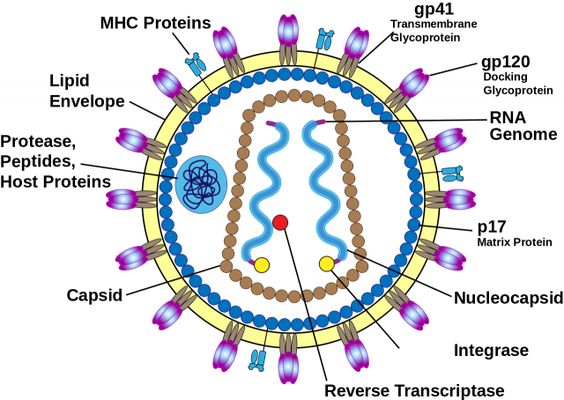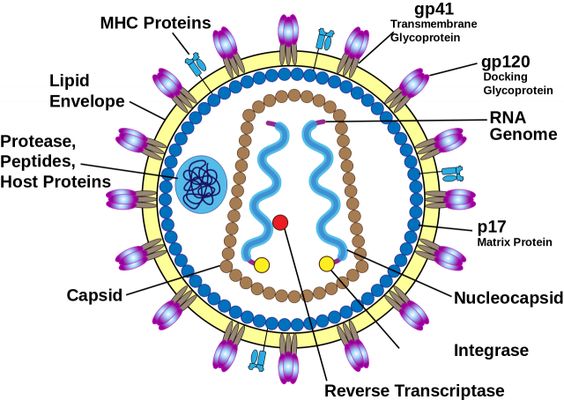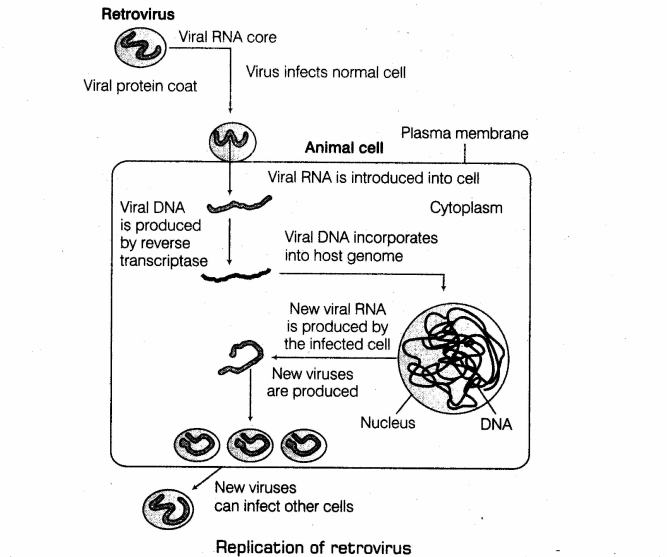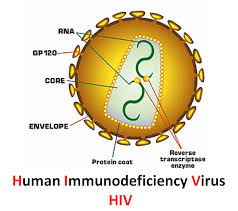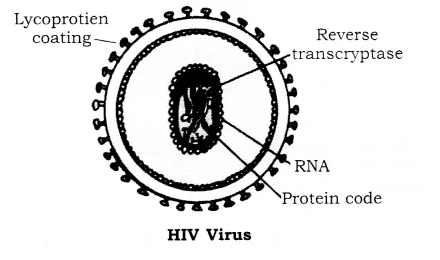Human Health And Disease - Class 12 Medical Biology - Extra Questions
Common cold is a kind of .......... disease. (Infectious, Non-infectious)
Give any two examples of non-infectious diseases:
Define health.
Give an example of immune deficiency.
Why is using tobacco in any form injurious to the health ? Explain.
Write the scientific names of the causal organisms of elephantiasis and ringworm in humans. Mention the body parts affected by them.
State a method of cellular defense which works in plant cell.
Give any two examples of infectious diseases.
The health of an organism depends upon the surrounding environmental conditions. Explain giving reasons.
Differentiate between chronic disease and acute disease.
Give some basic characteristics of chronic diseases.
Name the causative organisms for the following diseases.
(i) Elephantiasis
(ii) Ringworm
(iii) Amoebiasis
Differentiate between infectious and non-infectious diseases.
Explain mode of transmission of Hepatitis
Classify the following diseases as infectious or non-infectious.
(i)AIDS (ii) Tuberculosis (iii) Cholera (iv)High blood pressure (v) Heart disease (vi) Pneumonia (vii) Cancer
Name the target organs for the following diseases:
(i) Hepatitis
(ii) Pneumonia
(iii) Fungal disease
"Health is wealth". What is the significance of this proverb?
Mention the modes of transmission of tuberculosis..
What is poor health?
Define acute and chronic diseases.
What is a disease? How many types of diseases have you studied? Give examples.
What are the immunisation programmes available at the nearest health centre in your locality? Which of these diseases are the major health problems in your area?
A doctor/nurse/health-worker is exposed to more sick people than others in the community. Find out how she/he avoids getting sick herself/himself.
A baby is not able to tell her/his caretakers that she/he is sick. What would help us to find out.
(a) That the baby is sick?
(b) What is the sickness?
Name the plant source of ganja. How does it affect the body of the abuser?
Describe infectious and noninfectious disease.
What are the various routes by which transmission of the Human Immunodeficiency Virus takes place?
HIV is dreadful due to the enzyme present in it. Justify.
Name the causative agent of Elephantiasis.
Describe the structure of HIV with diagram.
Mention the type of immunity acquired by a baby through breast-feeding.
What is an allergy?
_________ virus causes AIDS.
Write the full form of H.I.V.
Sketch and label the 'Structure of HIV'.
Write the name harmful chemical substances of tobacco.
Complete the table appropriately.
| Symptoms | Disease | Reason |
| Pain in lower abdomen, urinary block, back pain, vomiting and giddiness | a) | b) |
| c) | Nephritis | d) |
Mention whether the following statements are true (T) or false (F)
AIDS is caused by a bacterium T/F
Find the odd one out:
Proteins, carbohydrates, fats, minerals, cancer.
Given appropriate biological/ technical terms for the following:
The type of immunity that exists in our body due to our genetic makeup.
Describe AIDS disease on the basis of following points -
i) Name of pathogen
ii) Test of confirmation of disease
iii) Main symptoms of disease
iv) Ways of prevention
v) Diagram of replication of retrovirus.
Name the following:
A viral disease caused due to unhealthy sexual contact.
Define Allergy. Give any two symptoms of Allergic reactions.
Which disease weakens the body's defence system against infections?
How do cytokine barriers provide innate immunity in humans?
Would you predict patients with AIDS to develop fever in response to an infection?
Enlist the basic modes of transmission of AIDS
Write very briefly about BCG
Mention whether the following statements are true (T) or false (F)
AIDS is caused by a fungus T/F
Name one plant and the addictive drug extracted from its latex. How does this drug affect the human body?
Application based questions.
Identify A, B, C and Din the following table
| Scientific name of the source plant | Drug | Harmful effects/Human body part affected |
| Papaver somniferum | A | Depressant/slows body function |
| Cannabis sativa | carinabinoids | B |
| Erythroxylum coca | C | D |
Name the plant source of the drug popularly called smack. How does it affect the body of the abuser?
Write scientific names of the two species of filarial worms causing filariasis. How do they affect the body of infected persons ? How does the disease spread?
Explain what is meant by metastasis?
Explain the role of innate immunity in protection from infectious diseases.
What is neoplasm?
How does a vaccine affect immunity?
How do cellular barriers and cytokine barriers provide innate immunity in humans?
Write the scientific names of the two species of fiarial worms causing filariasis.
How do macrophages in the human body act as 'HIV factory'?
Study the diagram showing replication of HIV in humans and answer the following questions accordingly:
Write the chemical nature of the coat ′A′.
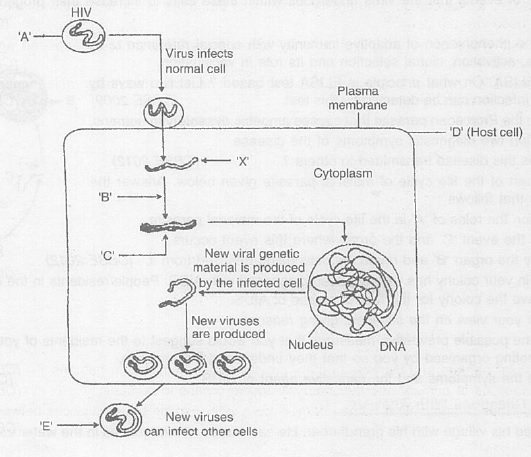
Which phylum has a patches of mesodermal cells?
A person in your colony has recently been diagnosed with AIDS. People/ residents in the colony want him to leave the colony for the fear of spread of AIDS.
Write the symptoms and the causative agent of AIDS.
Study the diagram showing replication of HIV in humans and answer the following questions accordingly:
Name the two different cells the new viruses ′E′ subsequently attack.
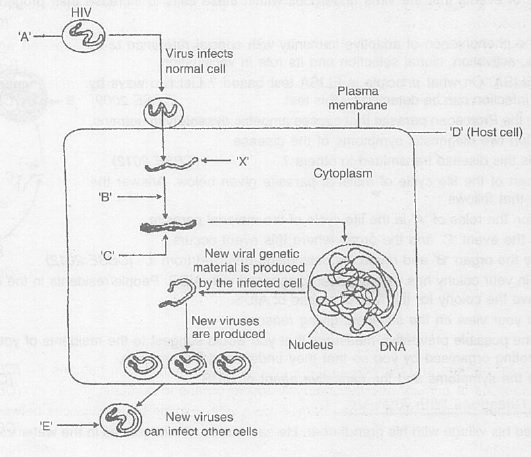
HIV.
What do you mean by immunization?
Explain the principle of immunization.
What is cancer?
State any two conditions essential for being free of disease.
Anthrax is caused by_______.
What is the function of mast cells?
Read the following
i) Common allergens are animal dander, dust, pollen and mites.
ii) Allergy reactions are sneezing, watery eyes, running nose and difficulty in breathing.
iii) For determining cause of allergy very small doses of possible allergens are injected to the patient.
iv) Symptoms of allergy can be reduced by using drugs like histamine, adrenalin and steroids.
What is immunisation? How do vaccination help in preventing diseases?
Diseases transmitted from an infected person to a healthy person are called ________.
Why it is difficult to create a vaccine against HIV?
What is the basis of principal of immunisation?
What does a vaccine consist of ? How does a vaccine work?
Which disease is more harmful - acute or chronic disease? Why ?
Write the name of a virus that causes AIDS.
Define allergy.
Name a disease which are caused by virus, bacteria and protozoa . Any two
Explain the following statement:
Being disease free is not the same as being healthy.
Name the disease caused by Epidermophyton.
Differentiate between health and disease.
Suggest two conditions necessary for having good health.
What is AIDS? Which microbe is responsible for AIDS infection ? State one mode transmission of this disease.Explain in brief one measure for the prevention of AIDS
What questions would you ask the doctor who visited you school on world AIDS day?
Describe the various type of barriers of immunity.
What is Auto-immunity?
Name the enzyme by which the HIV genome replicates in the host cell.
Give two examples each of the disease caused by fungus, protozoa, bacteria?
Explain why antibiotic do not work against viruses?
Following a road accident four injured persons were brought to a nearby clinic. The doctor immediately injected them with tetanus antitoxin.
What is tetanus antitoxin ?
Why family is important?
Following a road accident four injured persons were brought to a nearby clinic. The doctor immediately injected them with tetanus antitoxin.
Name the kind of immunity this injection provided.
Why there is no use of giving vaccine of hepatitis A virus?
Give reason, majority of children in many parts of India are already immune to Hepatitis A.
Why is HIV infection considered very fatal?
Fill in the blanks :
Living organisms carrying the infecting agents from one person to another are called_____.
Give two example of the following:
Non-infectious diseases
Give two example of the following:
Infectious diseases
Give two example of the following:
Acute diseases
Observe this figure and answer the questions given below:
The person infected by this virus is attacked by various diseases. Explain.
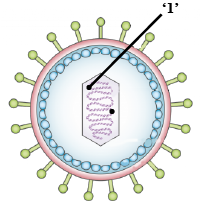
How can we prevent the following disease?
Hepatitis A
Fill in the blanks :
Many skin diseases are caused by_______.
Name the target organ for the following disease:
Hepatitis targets ______.
Give two example of the following:
Chronic diseases
Give the preventive measures of following disease.
Cancer
Classify the following diseases as infectious or non-infectious:
(a) Aids
(b) Tuberculosis
(c) Cholera
(d) High blood pressure
(e) Heart disease
(f) Pneumonia
(g) Cancer
Write the information on modern diagnostics and treatments of cancer.
Name the target organs for the following disease:
Fungal disease targets________.
Fill in the blanks:
________diease continuous for a few days and causes no longer term effect on body.
Give examples of the following:
A. Viral diseases
B. Bacterial diseases
C. Diseases spread through insects
D. Hereditary diseases
Choose the odd one out: Plague, AIDS, Cholera, Tuberculosis.
Fill in the blank:
Common cold lasts for a short duration of time. It is a type of _____ disease.
What do you mean by disease symptoms ? Explain giving two examples ?
Identify me.
I live in your small intestine. Pseudocoelom is present in my thread like body. In which phylum will you include me?
What are the harms of tobacco?
Short Answer.
Mention the structure of HIV.
Short Answers:
How many types of diseases are found?
Short answer question
Define the term: Disease.
Draw the diagram of HIV.
Very Short Answer
Define good health
Describe in detail the concept of vaccine. Name four diseases for which vaccines are available in the market.
Differentiate between a benign tumor and malignant tumor.
What is active immunity?
Name the pathological condition when uncontrolled cell division occurs.
Differentiate between active immunity and passive immunity.
Mention three symptoms of the disease Hepatitis.
The following table shows certain diseases, their causative organisms, and symptoms. Fill the gaps.
| Name of the disease | Causative organism | Symptoms |
| (i) Ascariasis | Ascaris | - |
| (ii) - | Trichophyton | Appearance of dry, scaly lesions on various parts of the body. |
| (iii) Typhoid | - | High fever, weakness, headache, stomach pain, constipation. |
| (iv) Pneumonia | Streptococcus | - |
| (v)- | Rhino viruses | Nasal congestion and discharge, sore throat, cough, headache. |
| (vi) Filariasis | - | Inflammation in lower limbs |
Name any four non-infectious diseases and their causes.
What is cancer? How is a cancer cell different from the normal cell? How do normal cells attain cancerous nature?
From which plant cannabinoids are obtained? Name any two cannabinoids. Which part of the body is affected by consuming these substances?
The outline structure of a drug is given below.
(a) Which group of drugs does this represent?
(b) What are the modes of consumption of these drugs?
(c) Name the organ of the body which is affected by the consumption of these drugs.
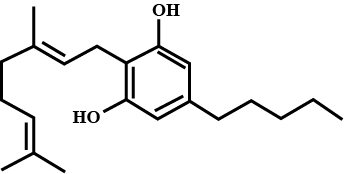
What are lifestyle diseases? How are they caused? Name any two such diseases.
Find the odd one out:
(a) Typhoid, cholera, jaundice, tuberculosis, tetanus.
(b) Cold, AIDS, plague, malaria, measles.
(c) Scurvy, rickets, haemophilia, pellagra, night blindness.
(d) Proteins, carbohydrates, fats, minerals, cancer.
Write very briefly about the following:
(a) BCG.
(b) Incubation period.
(c) Chicken pox.
(d) Hepatitis A.
In which diseases, the value of ESR increases.
Match the causative organisms with their diseases.
Give major differences between infectious and non infectious diseases. (any two).
What are pathogens ? Give examples.
During an injury nasal septum gets damaged and for its recovery, cartilage is preferred. Why cartilage is preferred?
Name the deficiency diseases caused due to deficiency of:
(i) Iodine (ii) Vitamin B2 (iii) Vitamin D (iv) Fluorine (v) Vitamin C (vi) Vitamin A (vii) Vitamin B12 (viii) Iron.
Name the vectors of following diseases.
(i) Kala azar(ii) Sleeping sickness(iii) Typhus(iv) Bubonic plague(v) Malaria(vi) Dengue
"Heavy supplements are not good during physical exercise in adolescence."Do you agree. Give reason in support of your answer.
Name any two organisms that are responsible for ringworms in humans. Mention two diagnostic symptoms. Name the specific parts of the human body where these organisms thrive and explain why.
What are enveloped viruses?
A team of students are preparing to participate in the interschool sports meet. During a practice session you find some vials with labels of certain cannabinoids.
(a) Will you report to the authorities? Why?
(b) Name of a plant from which such chemicals are obtained.
(c) Write the effect of these chemicals on human body.
A student on a picnic to a park on a windy day stared sneezing and having difficulty in breathing on reaching the park. The teacher enquired whether the student was allergic to something.
(a) What is an allergy?
(b) Write the two unique characteristics of the system involved in the response observed in the student?
Name the disease for which the following of vaccines are given.
(1) Salk's Vaccine
(2) B.C.G
What is AIDS? Describe along with symptoms and measures of control.
Short / Long answer type questions.
Which scientist is known as father of microbiology ? Who discovered mosaic disease of tobacco?
SHORT ANSWER TYPE
Name any four non-infectious diseases and their causes
Match the terms to these definitions
Health, mental illness, epilepsy, addiction, drug, mental deficiency, hypnotics, narcotics, hallucinogens, sedatives, tranquillisers, alcoholism
.......... A state of complete physical, mental and social well-being, not merely an absence of disease or infirmity.
(i) List any two situations, when a medical doctor would recommend an injection of preformed antibodies into the body of a patient. Name this kind of immunization and mention its advantages.
(ii) Name the kind of immunity attained when instead of antibodies, weakened antigens are introduced into the body.
Differentiate between.
Active acquired immunity and passive acquired immunity
Study the diagram showing replication of HIV in humans and answer the following questions accordingly:
Name the enzyme ′B′ acting on ′X′ to produce molecule ′C′. Name ′C′.
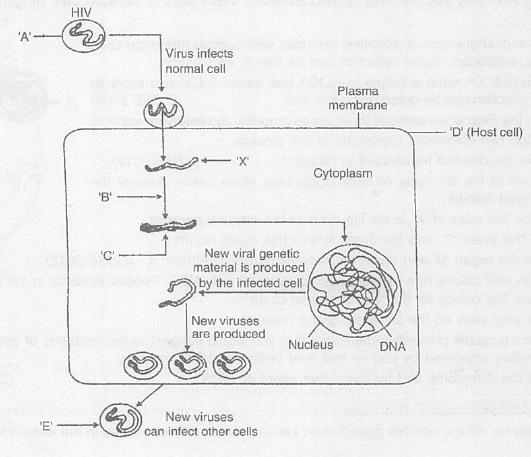
Study the diagram showing replication of HIV in humans and answer the following questions accordingly:
Mention the name of the host cell ′D′ the HIV attacks first when it enters into the human body.
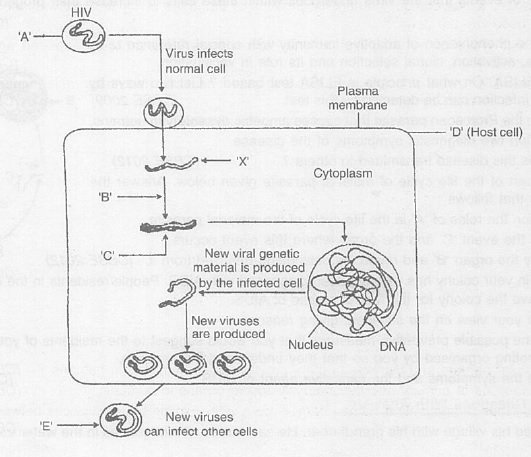
Distinguish between infectious and non-infectious diseases.
What is immunity? Explain the innate immunity with four types of barriers to defend the body from development of disease.
On the basis of characteristics given below name the phyIum or class for each:
Animals with soft cylindrical, unsegmented body with a false body cavity _____.
Name 2 bacterial diseases that spread through the medium of a) Air b) Contaminated food
Victim of snake bite is administered with antivenom because, it provides.
What is immunisation?
Give two examples of each of the following
Acute disease
Chronic disease
'Myasthenia gravis' occurs due to ?
Give the names of five non-infectious diseases.
Riya went to the garden to play with her father. After a few minutes, she started sneezing badly and had difficulty breathing. What do you think could be the possible reason?
Based on the duration of disease what are the different categories of diseases? Differentiate between them with one example each.
Class 12 Medical Biology Extra Questions
- Biodiversity And Its Conservation Extra Questions
- Biotechnology And Its Applications Extra Questions
- Biotechnology: Principles And Processes Extra Questions
- Ecosystem Extra Questions
- Environmental Issues Extra Questions
- Evolution Extra Questions
- Human Health And Disease Extra Questions
- Human Reproduction Extra Questions
- Microbes In Human Welfare Extra Questions
- Molecular Basis Of Inheritance Extra Questions
- Organisms And Population Extra Questions
- Principles Of Inheritance And Variation Extra Questions
- Reproduction In Organisms Extra Questions
- Reproductive Health Extra Questions
- Sexual Reproduction In Flowering Plants Extra Questions
- Strategies For Enhancement In Food Production Extra Questions
